Introduction to Xi’an:
If China were a towering tree, Beijing would be its crown while Xi’an would represent the deep roots beneath the surface. Known as Chang’an in ancient times, Xi’an has always been a capital for emperors. Here, thousands of years of history and cultural heritage continue to thrive. Some say that anywhere you dig in Xi’an, you might unearth a pile of Qin bricks, Han tiles, or even national treasures. While this might be a bit of an exaggeration, it’s true that Xi’an is rich in historical sites and cultural artifacts.
Today, the cityscape of Xi’an is a blend of ancient and modern. The city walls remain intact, the Giant Wild Goose Pagoda stands tall, and high-rise buildings dot the skyline. The streets are alive with various eateries, while the ancient ambiance of Shuyuanmen fills the air with a scholarly vibe, blending with the vibrant modern bars and cafes of Defu Alley, which serve as a nightlife haven for the younger crowd. This collision of the old and new creates a fresh, dynamic identity for Xi’an.
- Yanta District: Home to famous attractions like Ci’en Temple and the Shaanxi History Museum, it’s a must-visit area for anyone traveling to Xi’an.
- Lintong District: Known for the Terracotta Warriors, the tomb of Emperor Qin Shi Huang, and Huaqing Pool, it’s another essential stop for tourists.
- Hui People’s Street: A well-known food street bustling with culinary delights.
- Defu Alley: A vibrant modern bar street full of energy.
Personal Impression:
During my few days in Xi’an, I immersed myself in the rich history of this ancient capital, once the heart of the prosperous Tang Dynasty. I was pleasantly surprised to discover that this city isn’t merely stuck in its historical glory; instead, it develops at its own pace, radiating an irresistible charm that captivates everyone who visits.
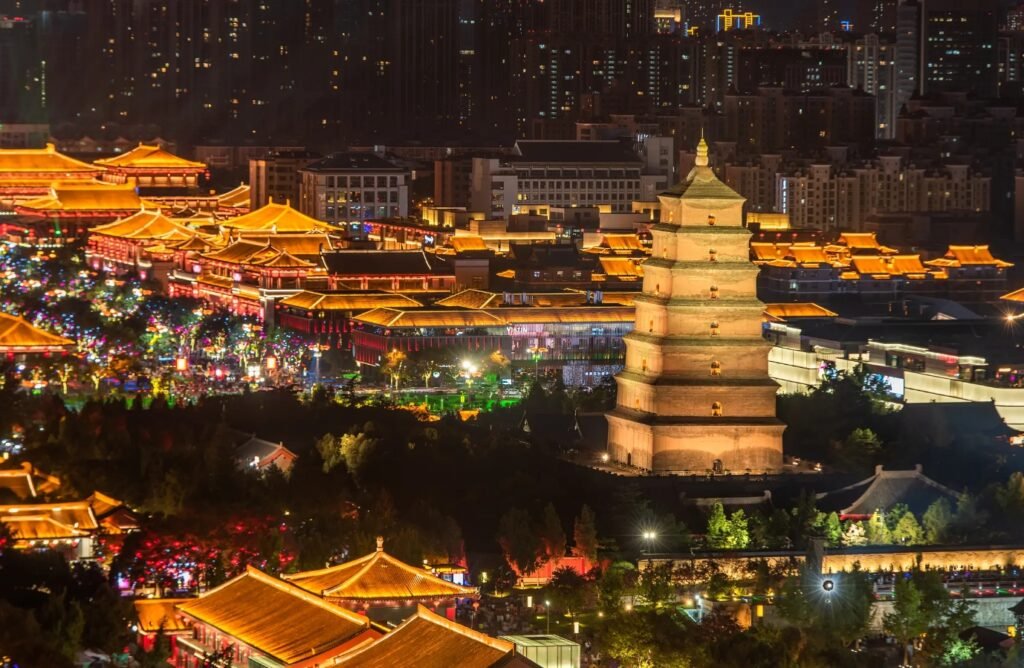
Best Travel Time:
- Spring (March to May): This season is perfect for exploring historical sites and natural scenic areas. You can wear lightweight clothing.
- Autumn (September to November): Similar to spring, it’s a great time for sightseeing. However, the weather can be unpredictable, so be prepared to ward off colds.
Clothing Guide:
Xi’an has a dry climate with considerable dust and sand, so come ready to face the elements. It’s advisable to bring moisturizing products and a windproof scarf. In September and October, the temperature can vary significantly between day and night, averaging between 18-26 degrees Celsius (64-79 degrees Fahrenheit). During the day, you can wear short-sleeved shirts, but it’s a good idea to carry a long-sleeve jacket. In November and December, the average temperature drops to around 1-12 degrees Celsius (34-54 degrees Fahrenheit), so wearing winter clothing is recommended.
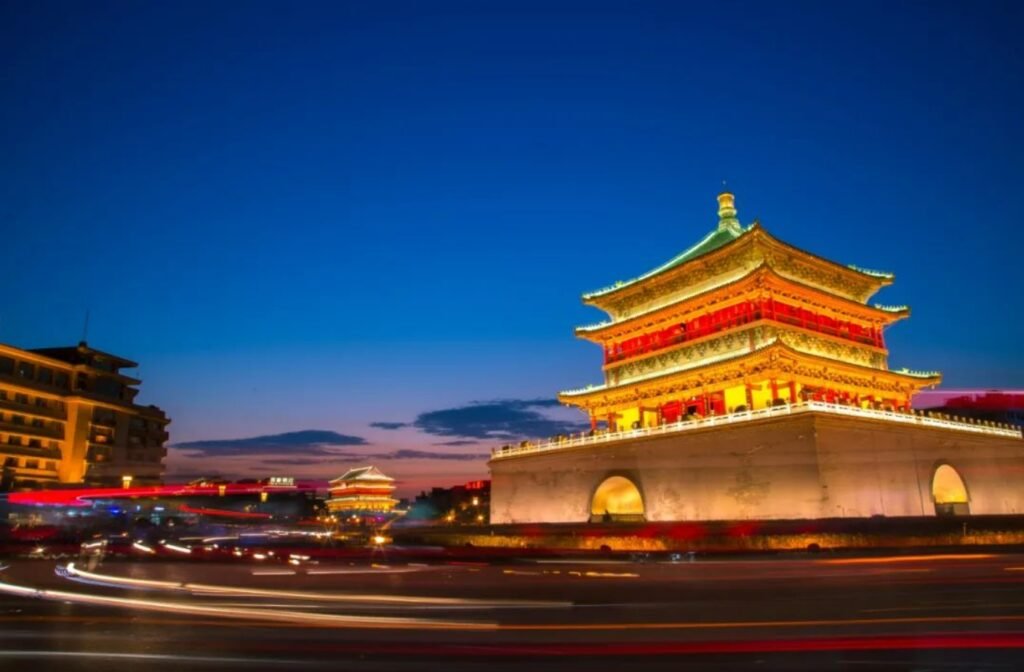
Attractions in Xi’an
Xi’an is historically significant as the city that has served as the capital for the most dynasties in China and is renowned for its influence. It’s famously referred to in the Records of the Grand Historian as the “Golden City a Thousand Miles Wide, the Land of Abundance.” Many of Xi’an’s attractions are historical relics, and you can’t miss iconic sites like the ancient city wall, the Big Wild Goose Pagoda, and the Bell (and Drum) Tower.
When visiting Xi’an, be sure to purchase the “Shaanxi Tourism Annual Pass,” which costs only 98 yuan along with a 1-inch photo. You can buy it at the post office. This pass allows for free or discounted access to many attractions, including the city wall, the Stele Forest Museum, the Daming Palace, and various sites throughout Shaanxi and even nationwide, making it a fantastic deal.
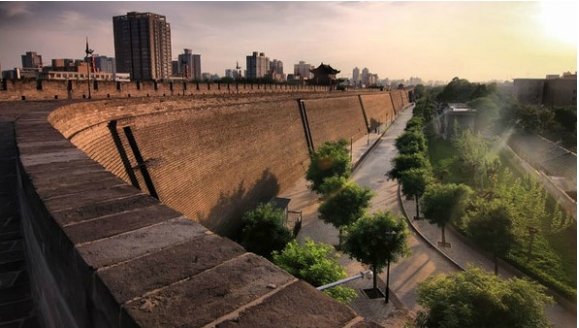
Xi’an Ancient City Wall
The Xi’an Ancient City Wall is the most well-preserved ancient fortification in China, boasting a history of over 1,400 years since the Tang Dynasty. It surrounds the city of Xi’an, standing strong and impressive. When you climb up to the city wall, you can enjoy panoramic views of the city, and there’s even the option to ride a bike along the top. You can also catch some exciting performances right on the wall!
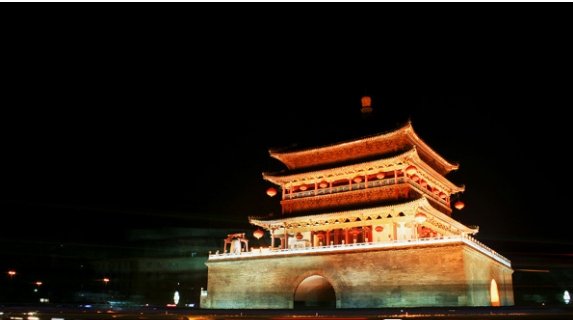
Bell Tower and Drum Tower
The Bell Tower and Drum Tower are often referred to as the “Sister Towers” or “Cultural and Martial Towers.” The Bell Tower is the largest and best-preserved ancient tower of its kind in China. Every day, you can enjoy performances featuring the chime bells, and the display of calligraphy and paintings gifted by the renowned artist Qi Baishi is quite valuable as well. The Drum Tower is the largest ancient drum tower still standing in China, and both towers were built during the Ming Dynasty, giving them a rich history of over 620 years.
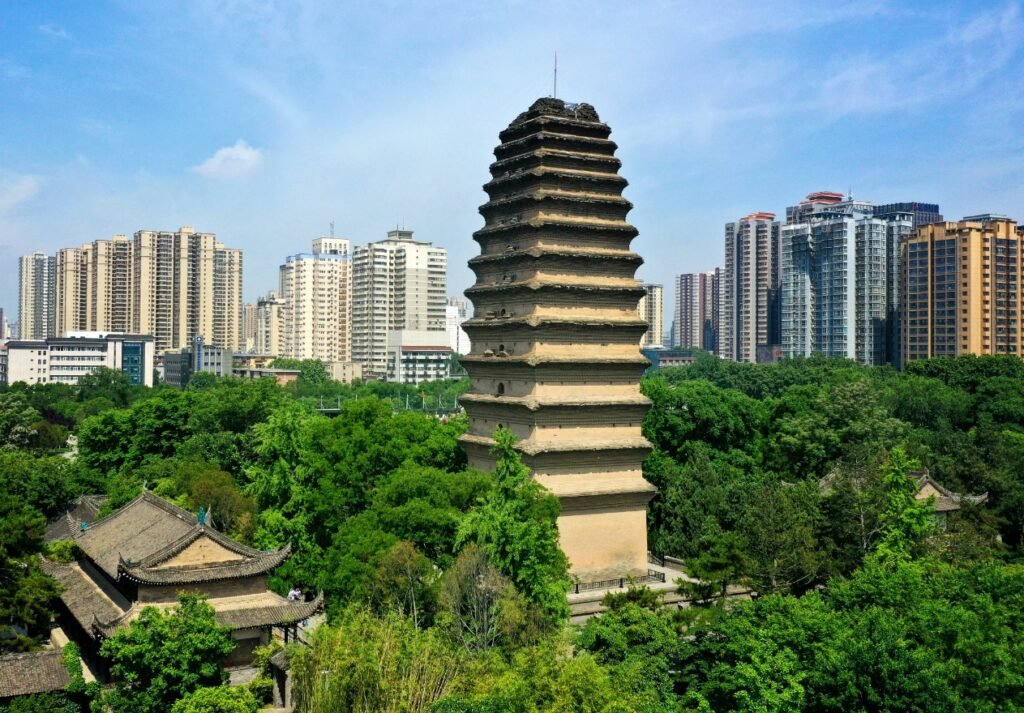
Small Wild Goose Pagoda
The Small Wild Goose Pagoda, also known as the Jianfu Temple Pagoda, was built during the Tang Dynasty. Over its long history of more than 1,200 years, this pagoda has weathered countless storms and survived over 70 earthquakes, experiencing three instances of separation and rejoining along the way.
Set in a tranquil environment, the Small Wild Goose Pagoda is currently located within the Xi’an Museum. Inside the temple, you can still find a massive iron bell cast during the Jin Dynasty in the third year of the Mingchang era (1192). This bell produces a rich, resonant sound, and the “Morning Bell of the Wild Goose Pagoda” is renowned as one of the eight scenic wonders of Guanzhong.
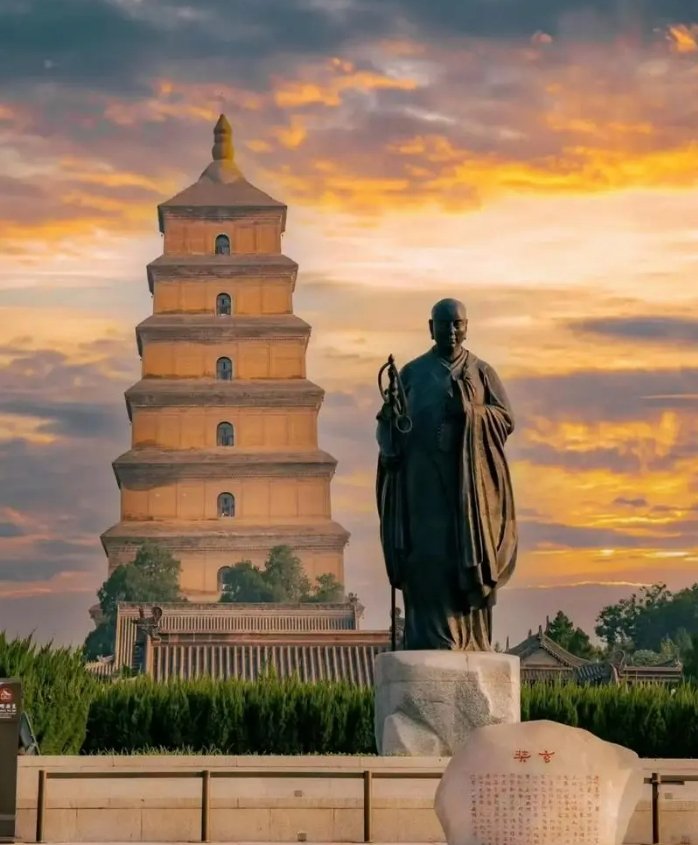
Big Wild Goose Pagoda
The Big Wild Goose Pagoda, also known as the Da Ci’en Temple Pagoda, was originally called the Stupa of the Western Courtyard of the Ci’en Temple . This architectural masterpiece of Buddhist art from the Tang Dynasty is one of the iconic landmarks of Xi’an.
When you climb to the top of the pagoda, you can enjoy breathtaking views of the ancient city of Chang’an. From the tower, you also get a full view of the stunning music fountain below.
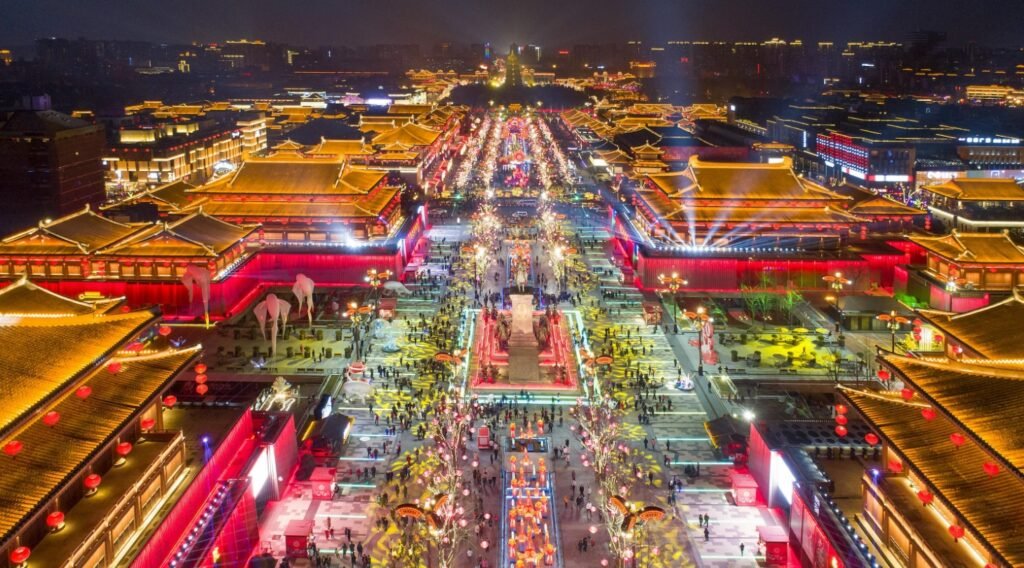
The Great Tang All-Night City
The Great Tang All-Night City features a central axis pedestrian street that stretches 1,500 meters from north to south, with the Zhenguan Cultural Square as its centerpiece. This vibrant area is made up of four cultural and artistic buildings: the Xi’an Grand Theatre, the Xi’an Concert Hall, the Qujiang Art Museum, and the Qujiang Pacific Cinema. Together, they reflect the supreme status of the ancient Tang Dynasty in religion, literature, art, and technology.
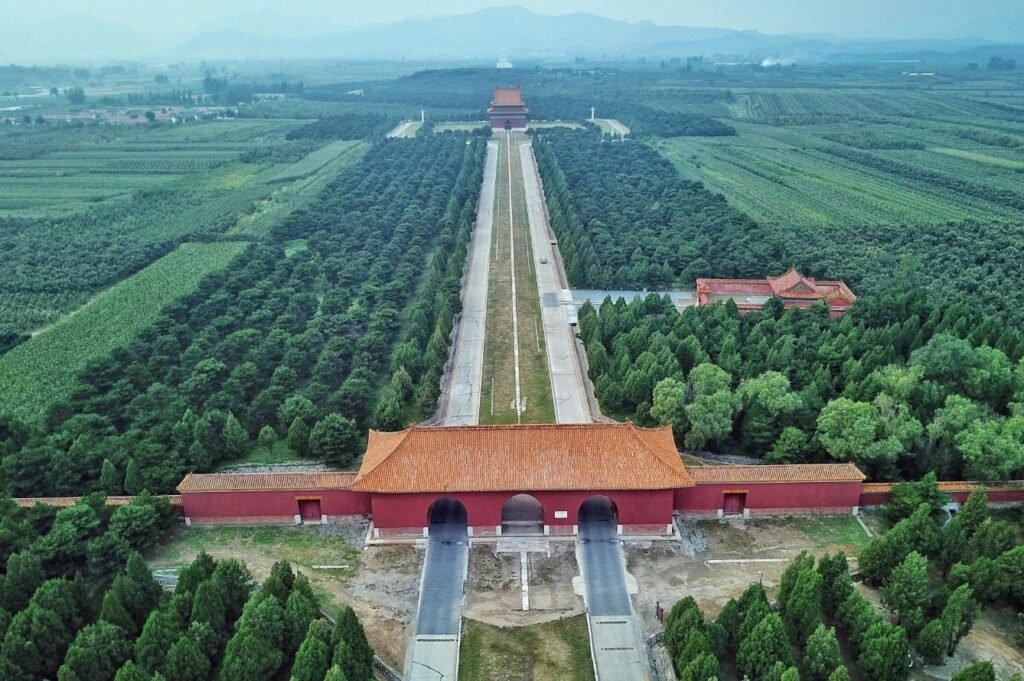
The Mausoleum of the First Qin Emperor
The Mausoleum of the First Qin Emperor, also known as the Lishan Garden, is the burial site of China’s first emperor. Its immense scale and the richness of its accompanying artifacts place it at the top among the tombs of all emperors throughout history. According to historical records, Qin Shi Huang, whose birth name was Ying Zheng, began construction of the mausoleum at the age of 13, and the project took a staggering 38 years to complete. This monumental undertaking set a precedent for the extravagant burials of feudal rulers throughout the ages. Due to limitations in archaeological technology, the tomb itself has yet to be excavated. Visitors can only view the grand burial mound, which is surrounded by peaks and seamlessly integrated with Mount Li.
The Terracotta Army
The Terracotta Army, part of the burial site of the First Qin Emperor, is celebrated as the “Eighth Wonder of the World.” The scale of the excavation pits is monumental, covering over 20,000 square meters across three pits, making it an unparalleled underground army formation. Archaeologists believe these burial pits symbolize the imperial guard that protected the emperor during his lifetime. The three pits are arranged according to military strategy, allowing visitors to view the terracotta warriors and horses unearthed from Pits One, Two, and Three.
Pit One serves as the main exhibition hall, featuring the vanguard at the front, followed closely by infantry and chariots. The entire formation is meticulously arranged, resembling an army poised for battle. This striking display evokes the image of the First Emperor in his prime, wielding power as he conquered vast territories and commanded respect across the realm.
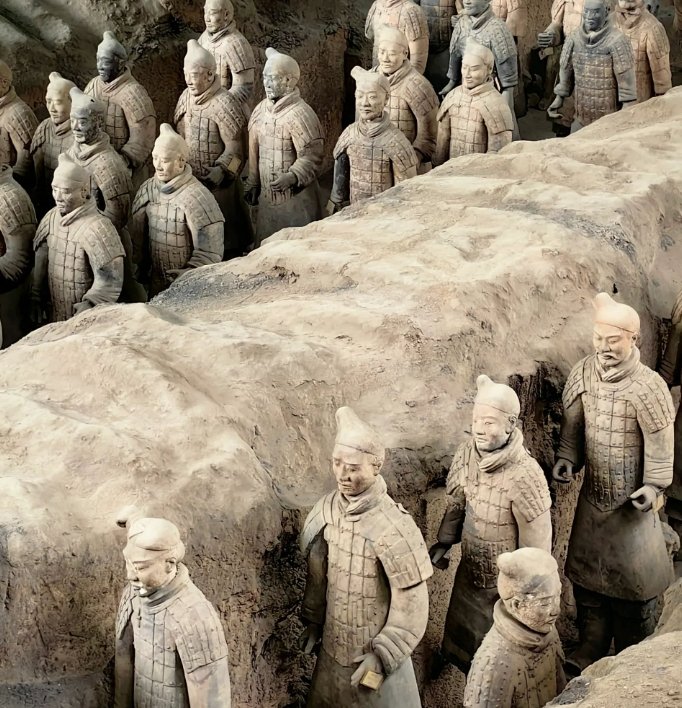
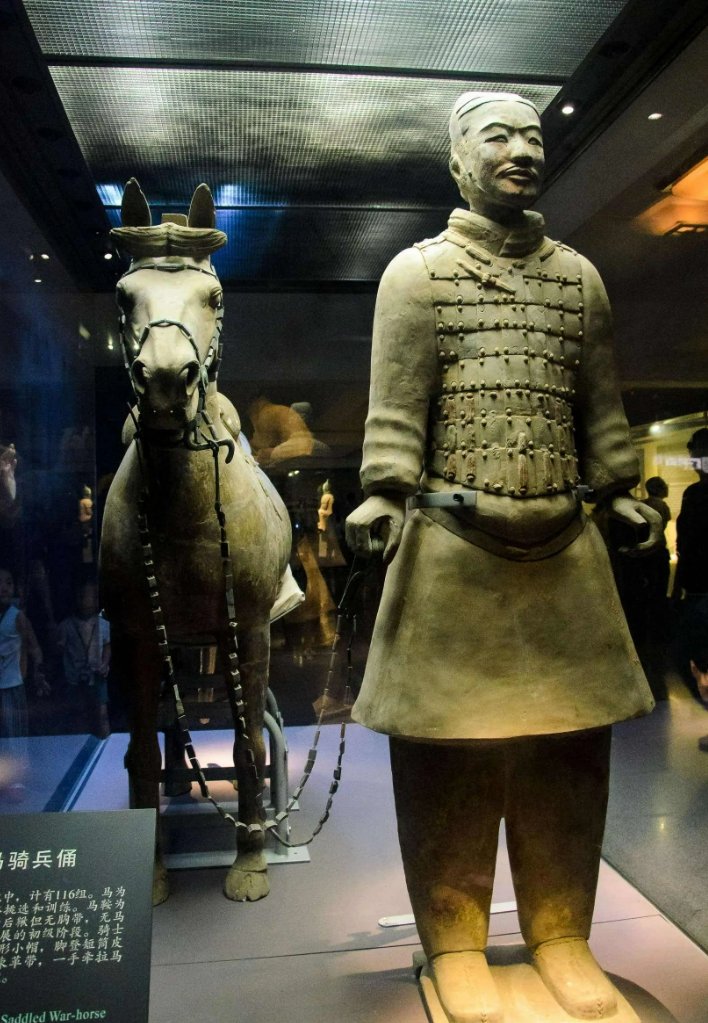
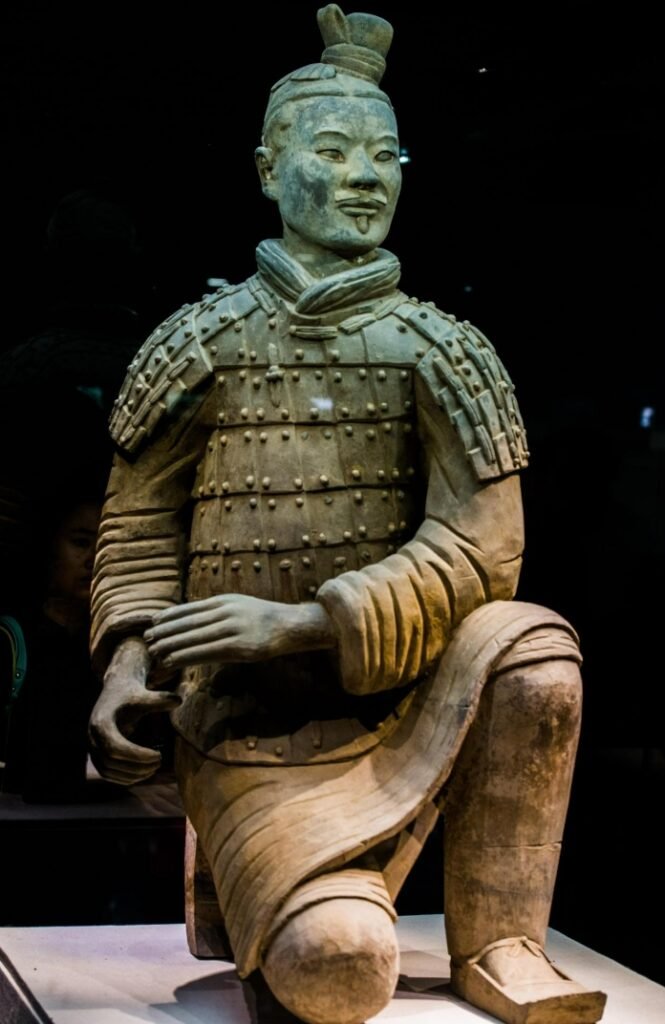


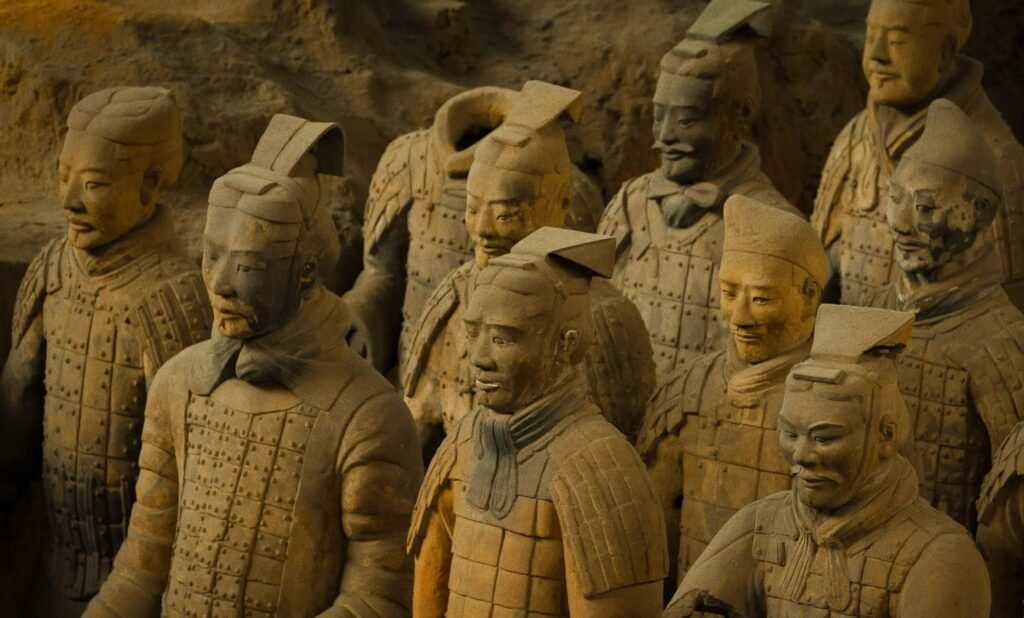
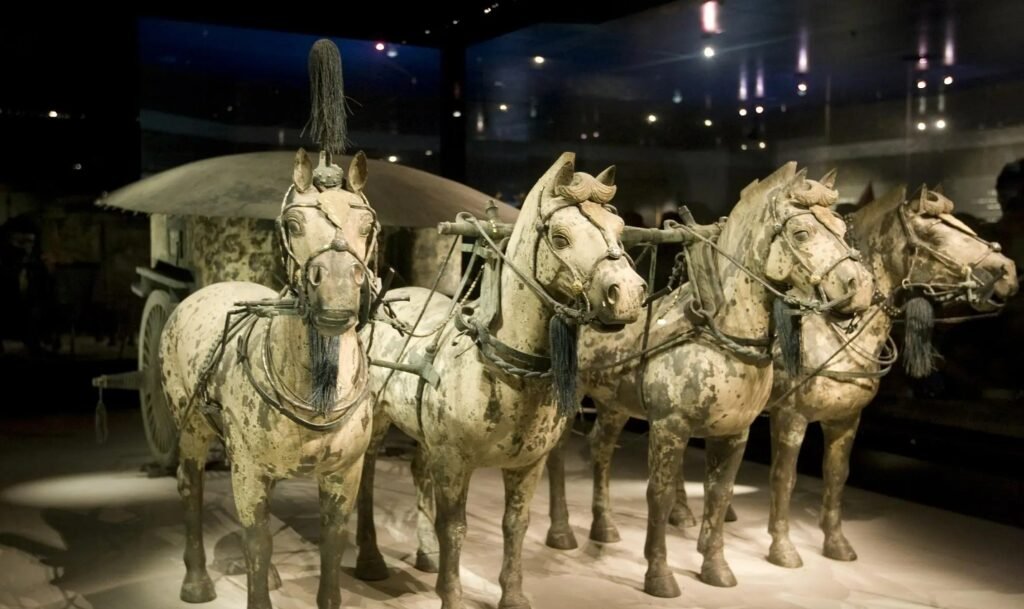


Accommodation Guide
Most travelers visiting Xi’an typically choose to stay around the Bell and Drum Towers in the Beilin District for easy access to transportation and nearby attractions. The price range for budget hotels in Xi’an is generally between 150 to 300 RMB. Additionally, there are several youth hostels concentrated near South Yanyuan Gate, making them popular choices for backpackers and budget travelers. Prices at these hostels are comparable to those of chain hotels, though they may not be significantly cheaper.
Personal Recommendation: For solo travelers on a tight budget, group buying deals are an excellent option. From my experience, there are often deals around 100 RMB for budget-friendly hotels. Just make sure to do your homework: check reviews and hotel photos, as some places can be misleading. It’s best to choose locations in the Beilin District or the Yanta District. These areas offer convenient transportation and are close to major attractions, plus they are known for being safer.
If you’re willing to splurge a bit, consider staying at the Hilton, Hyatt, or Prince Hotel near the Bell Tower for a more upscale experience.
When it comes to food in Xi’an, there’s enough to fill an entire book! Here, I’ll just give a brief overview.
Xi’an is famous for its food all across China, primarily known for its noodles and Muslim flavors. When you’re in Xi’an, you absolutely have to try a bowl of lamb paomo, wash it down with a bottle of Bingfeng soda—an iconic taste of old Xi’an—and don’t miss out on the unique biangbiang noodles. Make sure to stroll through the bustling Muslim Quarter while you’re at it!
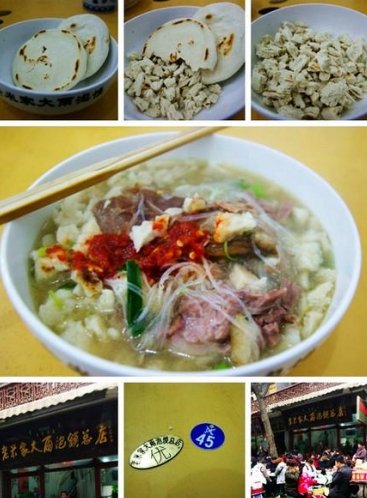
Lamb and beef paomo is a well-known snack from Xi’an with a rich history. Its standout features include tender meat, a thick, flavorful broth, and a chewy texture that’s downright satisfying. After enjoying it, sipping a small bowl of the broth enhances the lingering aroma, leaving you with a delightful aftertaste. You can enjoy it year-round, but it’s especially great in the winter.
The best times to eat paomo are in the morning and early afternoon. At this time, the meat broth is the freshest and most robust, giving you the best flavor. Plus, since paomo can be a bit heavy on the stomach, it’s not the best choice for dinner.
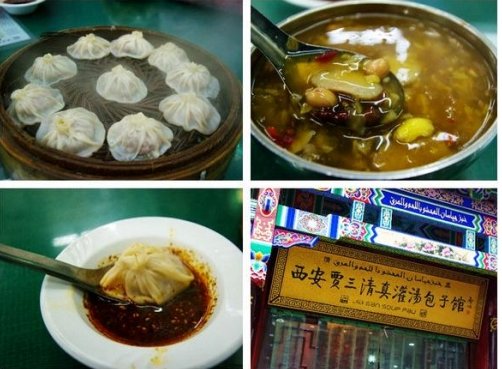
Soup dumplings, or guantang baozi, are made with high-quality ingredients and crafted with care. The dough is made from fine flour and hot water, while the filling consists of rib meat mixed with fresh bone marrow broth and over ten premium seasonings. These dumplings are not only fragrant and tender but also have a delicate, translucent appearance. The broth inside is rich and flavorful, and they’re deliciously oily without being greasy.
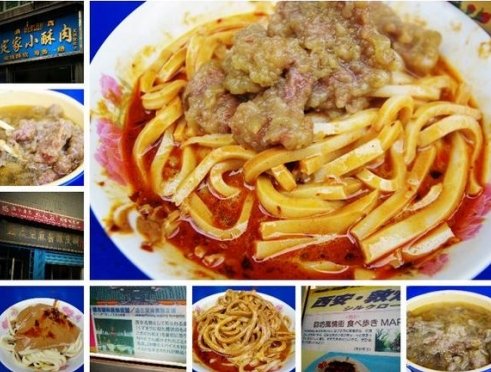
Xi’an cold noodles, or liangpi, come in a variety of types and are made from either flour or rice, which divides them into two main categories: rice noodles and wheat noodles. Rice noodles are translucent and are most popular when made from high-quality rice from Qin Town in Huxian County, while wheat noodles have a slightly yellow color and are often mixed with gluten.
When enjoying liangpi, diners can customize the seasoning according to their taste preferences. You can ask the shop to adjust the spice level—whether you want less or more chili, extra gluten, or no garlic at all. If you’re not into spicy food, they can drizzle some sesame oil over the noodles for added flavor.
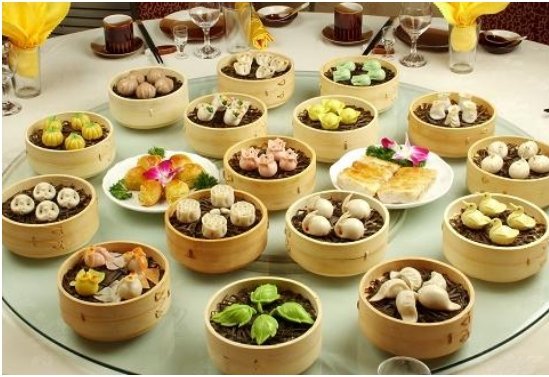
The Xi’an dumpling banquet is a famous culinary experience in the city, crafted from research into the traditional dumplings of the Tang Dynasty and Chinese cuisine as a whole. It gets its name from the diverse and intricate shapes of the dumplings that make up the feast.
These dumplings are made with high-quality ingredients and unique techniques, resulting in lively shapes—each dumpling is distinct and eye-catching. They not only look appealing but also offer a delightful flavor that keeps you coming back for more.

Roujiamo, literally meaning “meat stuffed in a bun” in ancient Chinese, is a beloved street food among locals. It’s not only tasty but also filling.
For the bun, you need a specially crafted white flatbread called “baiji mo” for the authentic experience. This bun is delightfully crispy with a subtle, sweet flavor. When you eat it, take a small amount of the marinated pork, chop it up a bit, add a touch of the broth, and stuff it into the freshly baked baiji mo. Enjoy it while it’s hot—the combination of the crispy bun and flavorful meat is truly unforgettable!
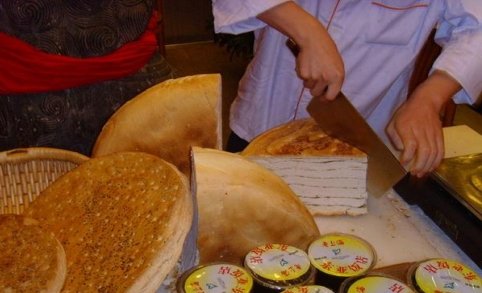
Guokui, also known as “guokui mo,” “dry bread,” or “pot crust,” is a traditional snack beloved by residents in both urban and rural areas of the Guanzhong region in Shaanxi. The origin of guokui traces back to a grandmother gifting it to her grandson to celebrate his one-month milestone, eventually evolving into a popular, flavorful convenience food.
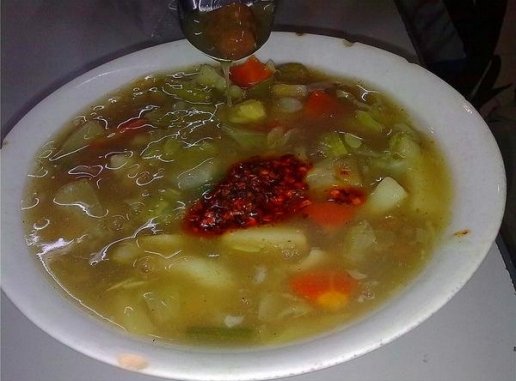
Meatball and spicy soup, or qingzhen ròuwán húlàtāng, is a halal dish popular among the Hui people in Xi’an. Nowadays, many locals enjoy it as a breakfast option.
To stand out in an area predominantly occupied by Han Chinese, Xi’an’s Hui community has put extra effort into their seasoning. They’ve eliminated the sour flavors typical in some dishes and instead embraced a saltier profile that complements the rich aromas of lamb and beef broth. The result is a flavorful, hearty soup that’s perfect for starting the day!
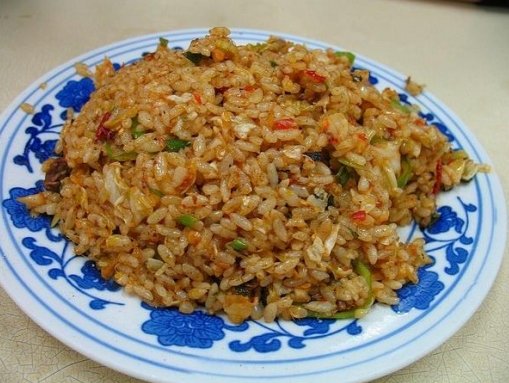
Suancai chao mi,” or pickled cabbage fried rice, is a local dish that’s basically fried rice. The term “chao mi” is the common name used by the locals.
You can mix the rice with various ingredients like shredded meat, vegetables, and eggs, but the most popular and signature version features shredded pork stir-fried with pickled cabbage. This combination creates a savory and tangy flavor that’s both comforting and delicious.
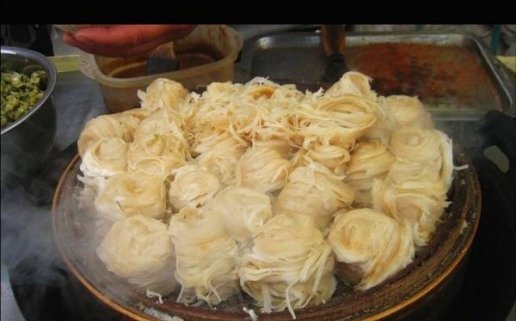
This is a traditional and exquisite snack known for its many layers, fine strands, and fluffy texture that isn’t greasy. Its shape is often described as “lifting it looks like golden threads, and when set down, it resembles a pine cone,” which is how it gets its name. Legend has it that this treat dates back to the Tang Dynasty, giving it a history of over 1,400 years.
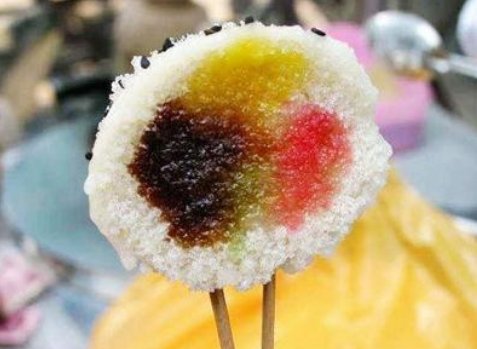
Jinggao, or “mirror cake,” is made using high-quality glutinous rice flour packed into a small wooden steamer. It’s often topped with red or green beans for added flavor. Once steamed, it takes on a delicate, white appearance and a small, round shape that resembles a little mirror, which is how it gets its name. The result is a soft and chewy treat that’s both charming and delicious!
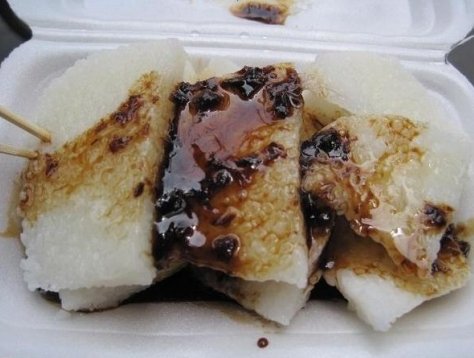
Honey cold rice dumplings are a popular summer treat unique to Xi’an, the Guanzhong region, and southern Shaanxi. Shaped like water chestnuts, these dumplings are translucent and glistening, making them a refreshing snack to cool you down.When you’re ready to eat, they are sliced into small pieces using thread or a bamboo knife and served on a plate. Drizzled with honey or syrup made from rose or osmanthus flowers, they offer a sweet and delightful flavor that’s perfect for hot days!
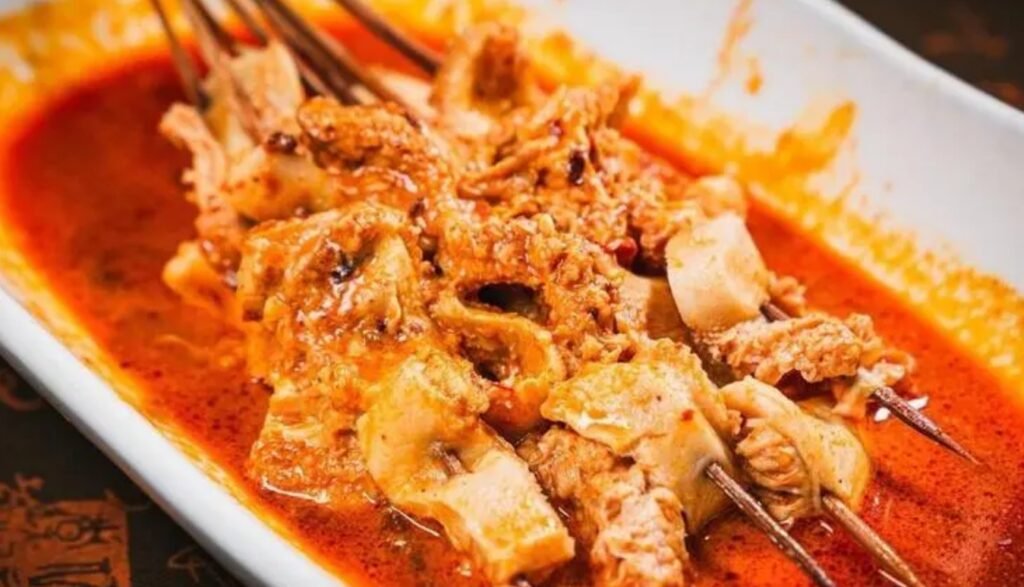
Shuan niudu, or boiled beef tripe, is a famous street food in Xi’an. Fresh beef tripe is sliced and skewered with bamboo sticks, then cooked in a rich broth until tender. Once cooked, it’s dipped into a flavorful sauce made from sesame paste, chili sauce, and a variety of seasonings. The combination is aromatic and chewy, making it a delicious and satisfying snack!
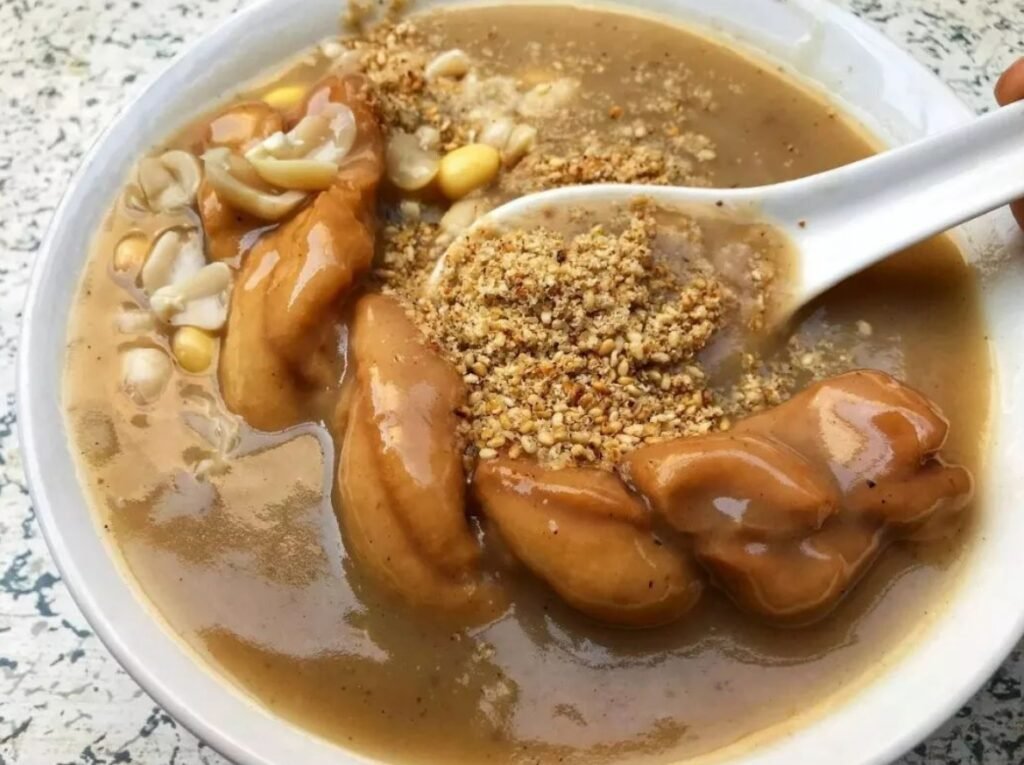
Youcha mahua, or oil tea with fried dough twists, is a traditional snack from Xi’an. The dough twists are soaked in oil tea until they become soft and tender. At this point, the fragrant combination of oil and dough mingles with the flavors of crushed sesame, almonds, yellow soybeans, and peanuts, creating a rich and satisfying taste that sweeps away any hunger pangs!
Route Guide:
Typically, exploring the attractions within Xi’an takes about 2 to 3 days. For the surrounding sights, you can usually break them down by direction—East, West, South, and North—and visit them in that order. If you’re just hitting the highlights on each route, you’ll need at least a full day for each one to really take it all in.
Two-Day Tour of Xi’an
Itinerary Design
Day 1:
- Ancient City Wall
- Bell Tower
- Drum Tower
- Shaanxi History Museum
- Big Wild Goose Pagoda & Da Ci’en Temple
- Big Wild Goose Pagoda Square
Day 2:
- Lintong Museum
- Huaqing Hot Springs
- Lishan Forest Park
- Terracotta Army
- Tomb of Qin Shi Huang
Detailed Itinerary
Day 1:
- Start early and head to any of the city wall’s entrance points. Walk along the well-preserved, magnificent ramparts to take in the views of the city. You can either walk or take the wall’s shuttle to the South Gate and then descend.
- After that, take a bus or a taxi to the Drum Tower. Enjoy lunch in the Muslim Quarter nearby.
- Once you’re done, visit the Drum Tower and then the Bell Tower, which are very close to each other.
- In the afternoon, catch a bus from the Bell Tower bus station to the Shaanxi History Museum (the second ticketing begins at 1 PM, and it’s recommended to take a guided tour). After exploring the museum, walk over to the Big Wild Goose Pagoda and visit Da Ci’en Temple, where the monk Xuanzang translated Buddhist scriptures. You can also climb the pagoda for panoramic city views.
- Near the Big Wild Goose Pagoda Square, you’ll find plenty of restaurants; it’s a great spot to grab dinner after your visit.
- End the day with the fountain show at the Big Wild Goose Pagoda Square before heading back to your hotel.
Day 2:
- After breakfast, go to the East Square of Xi’an Railway Station and take bus routes 5 or 306 to Lintong Museum (the Western Zhou bronzes and the gold and silver coffins are worth checking out). The museum is close to Huaqing Hot Springs, so after your visit, you can walk over to explore the springs.
- From Huaqing Hot Springs, you can walk to Lishan Mountain to see the site of the Xi’an Incident at the Bingjian Pavilion and the remains of the beacon tower from “The Fire Signal to Warn the Feudal Lords.”
- In the afternoon, catch a ride from Huaqing Hot Springs to the Terracotta Army (it’s best to have a guide for this part). After that, take the shuttle bus to the Tomb of Qin Shi Huang.
- In the evening, take a shuttle bus back to Xi’an city.


